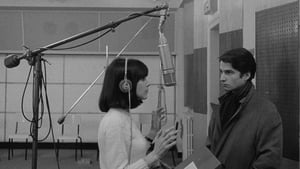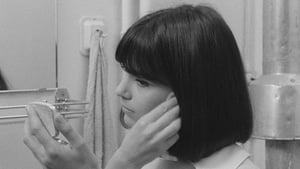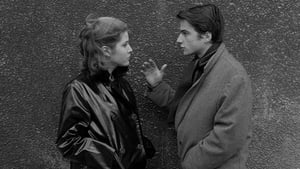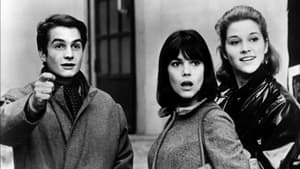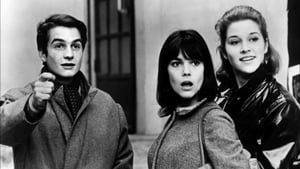Contact: [email protected]
Video Sources 0 Views

Synopsis
[ez-toc]




Introduction
In the realm of classic cinema, the year 1966 bestowed upon the world a gem that continues to captivate audiences—Masculin Féminin Colorized. A testament to the French New Wave movement’s avant-garde spirit, this film, directed by the visionary Jean-Luc Godard, unravels the complexities of youth, love, and societal shifts. Now, in a bold move, the timeless monochrome canvas of Masculin Féminin has been drenched in vibrant hues, breathing new life into its frames. Join us on a journey as we delve into the brilliance of Masculin Féminin 1966: Colorized Edition, exploring its actors, narrative, and the controversial yet intriguing world of colorization.
Read Media File Transfer Agreement: Terms and Conditions
Read FAQ
The Evolution of Colorization in Film Restoration
Before delving into the chromatic world of Masculin Féminin Colorized 1966, let’s rewind the cinematic tape to understand the evolution of colorization in film restoration. The concept of adding color to black-and-white films emerged as a preservation method, aiming to rejuvenate and reintroduce classics to contemporary audiences. Initially met with skepticism, colorization techniques have come a long way since their inception. Advancements in technology have allowed for more nuanced approaches, with a focus on preserving the authenticity of the original cinematography.
Examining Masculin Féminin Colorized 1966: A Timeless Portrait of Youth in Vibrant Hues
Masculin Féminin Colorized, a cornerstone of the French New Wave, is a cinematic exploration of the complexities of youth culture. Set against the backdrop of 1960s Paris, the film introduces us to Paul (played by the charismatic Jean-Pierre Léaud) and Madeleine (portrayed by the enchanting Chantal Goya). Their tumultuous love story unfolds amidst a vibrant tapestry of political activism, pop culture, and societal shifts.
Jean-Luc Godard, known for his experimental filmmaking style, crafts Masculin Féminin as a mosaic of moments, blurring the lines between fiction and reality. Léaud’s performance as Paul is nothing short of captivating, embodying the essence of youth with unparalleled authenticity. Goya, transitioning from pop singer to Nouvelle Vague actress, brings a unique charm to her role, creating a chemistry with Léaud that transcends the screen.
The Artistry of Colorization in Masculin Féminin Colorized 1966
Colorization is an art form that demands a delicate touch, especially when applied to a classic like Masculin Féminin Colorized. The colorization process involves meticulous decisions regarding the color palette, ensuring it complements the film’s original aesthetics. In the case of Masculin Féminin Colorized 1966, the creative choices behind the colorization bring forth a new dimension to the narrative.
The decision to colorize this French New Wave masterpiece was not taken lightly. Filmmakers and restoration artists aimed to strike a balance between modern techniques and the original cinematography style of Godard. The result is a visual feast that retains the film’s authenticity while breathing fresh life into its frames.
Reviving a Classic: Comparing the Colorized Version with the Original Black-and-White
The transition from black-and-white to color can be a divisive topic among cinephiles. In comparing the colorized version of Masculin Féminin Colorized with its original counterpart, we find both similarities and differences that contribute to a unique viewing experience.
The colorization enhances the vibrancy of 1960s Paris, immersing the audience in the zeitgeist of the era. The clothing, the streets, and the nuances of the characters come alive in a way that black-and-white cinematography couldn’t fully capture. However, the controversy surrounding colorization persists, with purists arguing that it dilutes the director’s original vision. The debate adds a layer of complexity to the cinematic journey, prompting viewers to reflect on the intersection of preservation and artistic interpretation.
The Enduring Legacy of Masculin Féminin Colorized 1966
Beyond its visual allure, Masculin Féminin 1966 leaves an indelible mark on cinema and culture. The film’s influence on youth culture and subsequent generations is evident in its portrayal of the societal shifts and political activism of the 1960s. It stands as a time capsule, allowing audiences to revisit and reflect on a pivotal moment in history through the lens of Godard’s masterful storytelling.
Moreover, Masculin Féminin Colorized played a crucial role in shaping gender representation in cinema. Breaking away from traditional norms, the film presents complex and authentic portrayals of its female characters, a hallmark of the French New Wave movement.
Where to Watch the Colorized Version of Masculin Féminin Colorized 1966
For those eager to experience Masculin Féminin 1966 in its colorized glory, the film is available on select streaming platforms. Additionally, a special DVD release offers an opportunity for cinephiles to own a piece of cinematic history and witness the seamless marriage of classic storytelling with modern visual enhancements.
In Conclusion
As we navigate the waters of film restoration and colorization, Masculin Féminin 1966 stands as a beacon of artistic evolution. The colorized edition invites audiences to rediscover the magic of the French New Wave, with Jean-Pierre Léaud and Chantal Goya’s performances shining anew. It sparks a dialogue on the delicate balance between preserving cinematic history and embracing new artistic interpretations.
In the technicolor embrace of Masculin Féminin 1966, we find a harmonious fusion of past and present—a testament to the enduring power of cinema to transcend time and captivate generations old and new. Embrace the hues, immerse yourself in the narrative, and let the colors of this cinematic masterpiece paint a vivid portrait of youth, love, and the ever-changing canvas of society.

